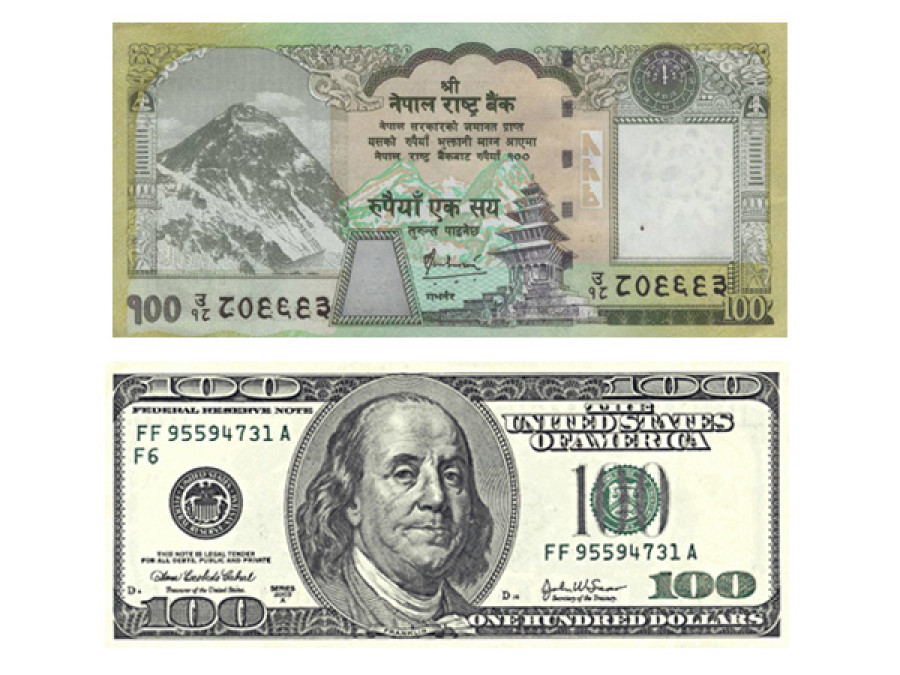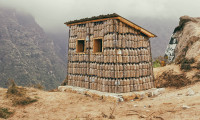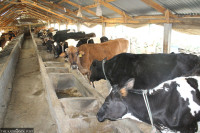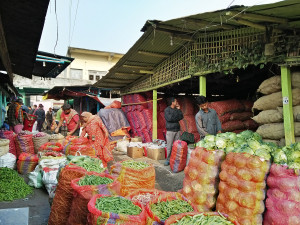Money
Nepali rupee hits all-time low of 109.93 per dollar
The Nepali rupee plunged to an all-time low against the US dollar on Wednesday with Nepal Rastra Bank (NRB) fixing the exchange rate at Rs109.93 for Thursday.
The Nepali rupee plunged to an all-time low against the US dollar on Wednesday with Nepal Rastra Bank (NRB) fixing the exchange rate at Rs109.93 for Thursday.
With the rupee weakening against the greenback over the last several months, the already steep rise in prices of imported goods caused by supply constraints due to the Indian embargo has been exacerbated.
The local currency plunged below Rs109 per US dollar on January 21 for the first time this year. Then it dropped to a record low of Rs109.48 per US dollar on February 12 before eventually coming down to fresh low on Wednesday.
Previously, the currency had fallen to a low of Rs108.90 per dollar on February 28, 2013, then the local currency started to gain reaching Rs93.86 per dollar on May 23, 2014. On September 7, 2015, one day before the Indian trade embargo started, the exchange rate was Rs106.64 per dollar. The Nepali rupee’s downswing has been attributed to a sharp fall in the value of the Indian rupee (IRs) against the greenback. Since the local currency is pegged with the Indian rupee, with a fixed exchange rate of Rs1.6 per IRs1, any fluctuation in the value of Indian currency (IC) has a direct impact on the Nepali currency.
The Indian media has reported that the plunge in IC is due to an increasing outflow of foreign investors from India’s capital market along with a rising demand for dollars from Indian importers.
The reports stated that Indian currency opened at IRs 68.14 per dollar and closed at IRs 68.38 on Wednesday, the lowest since August 28, 2013. “Foreign portfolio investors sold equities worth IRs9.64 billion (about $140 million) Tuesday, according to provisional data from the Bombay Stock Exchange,” said The Economic Times.
A rising US dollar has a direct impact on the export and import business. The fall in local currency is expected to raise market prices, worsening the cost of daily living of the people which has been affected by supply constraints due to the Indian embargo wh- ich has recently been lifted.
Bijay Kumar Saraogi, chairperson of the Trade Committee of the Federation of Nepalese Chambers of Commerce and Industry (FNCCI) said the rising dollar had already affected market prices. “The recent rise in market prices was a combined impact of the trade embargo imposed by India and the stronger dollar,” said Saraogi, adding that the inflation rate could go up as a result. Nepal Rastra Bank’s six-month statistics also showed that the country saw double-digit inflation over the period.
The stronger dollar could boost exports as local products will become cheaper in the international market. Experts said that the adverse impact on import prices would surpass the benefit of increased exports. “Being weak on the export side, the country will benefit little from the depreciation of the Nepali rupee,” said Bijendra Man Shakya, a trade expert.
Nepal mainly exports primary products like herbs and agro-based products besides handicrafts and a few manufactured goods made of imported raw materials. “Being incompetent in export goods, the benefit in export earnings will be minimum compared to the high import cost,” Shakya said.
A stronger dollar is also expected to increase the cost of large projects as construction equipment is imported from countries other than India. According to experts, the appreciation of the dollar can affect remittance inflow positively. But it will also increase the government’s cost of debt servicing.




 15.12°C Kathmandu
15.12°C Kathmandu













